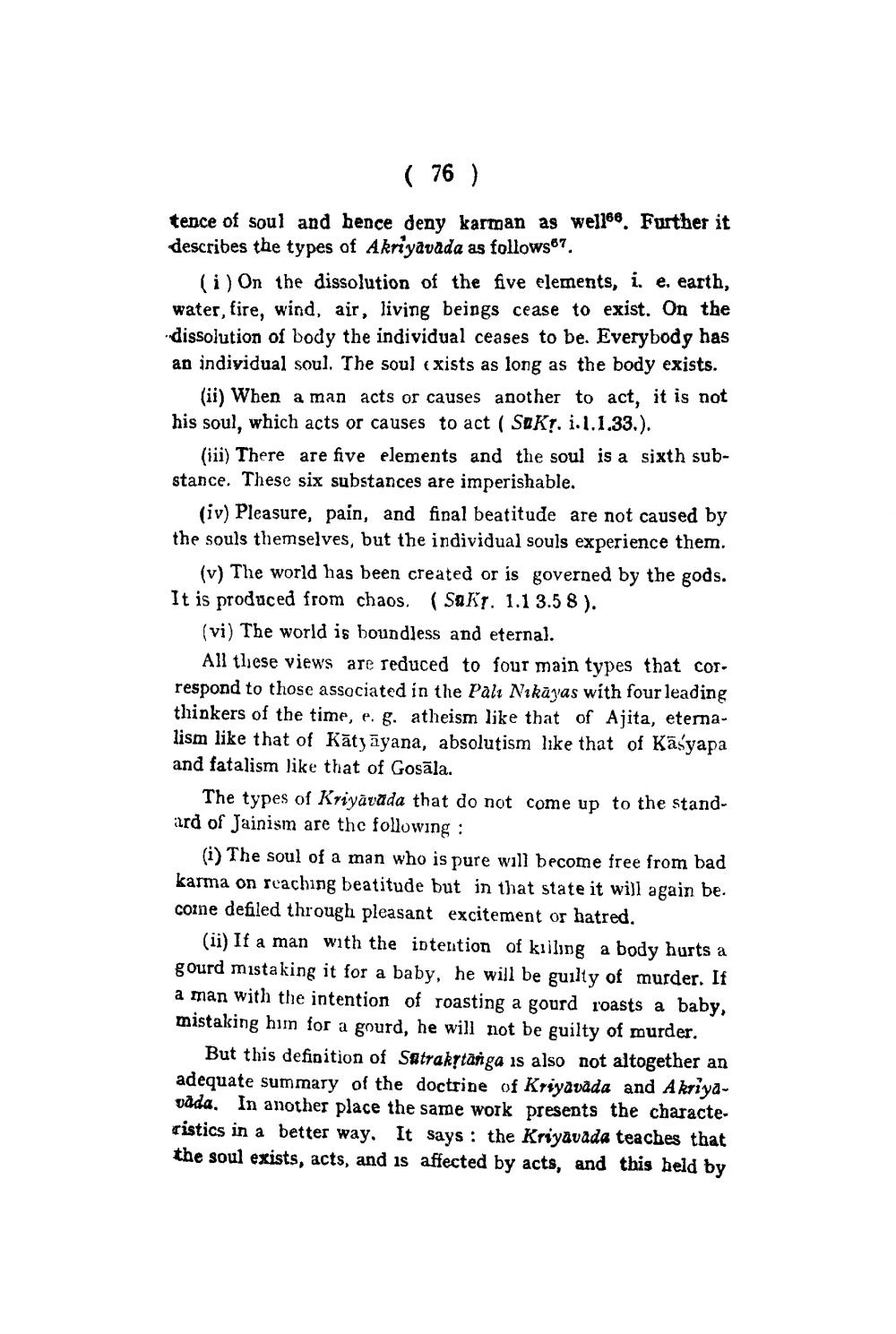________________
( 76 )
tence of soul and hence deny karman as well66. Further it describes the types of Akriyavada as follows®7.
(i) On the dissolution of the five elements, i. e. earth, water, fire, wind, air, living beings cease to exist. On the dissolution of body the individual ceases to be. Everybody has an individual soul. The soul (xists as long as the body exists.
(ii) When a man acts or causes another to act, it is not his soul, which acts or causes to act ( SeKr. 1.1.1.33.).
(iii) There are five elements and the soul is a sixth substance. These six substances are imperishable.
(iv) Pleasure, pain, and final beatitude are not caused by the souls themselves, but the individual souls experience them.
(v) The world has been created or is governed by the gods. It is produced from chaos. (Sakt. 1.1 3.58 ).
(vi) The world is boundless and eternal.
All these views are reduced to four main types that correspond to those associated in the Palı Nikayas with four leading thinkers of the time, e. g. atheism like that of Ajita, eternalism like that of Katyāyana, absolutism like that of Käsyapa and fatalism like that of Gosāla.
The types of Kriyāvada that do not come up to the standard of Jainism are the following:
(i) The soul of a man who is pure will become free from bad karma on reaching beatitude but in that state it will again be. corne defiled through pleasant excitement or hatred.
(ii) If a man with the intention of kuiling a body hurts a gourd mistaking it for a baby, he will be guilty of murder. If a man with the intention of roasting a gourd roasts a baby, mistaking him for a gourd, he will not be guilty of murder.
But this definition of Satraktänga is also not altogether an adequate summary of the doctrine of Kriyavada and Akriyaväda. In another place the same work presents the characteristics in a better way. It says: the Kriyavada teaches that the soul exists, acts, and is affected by acts, and this held by




